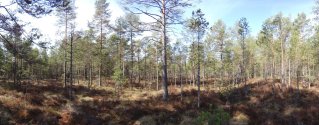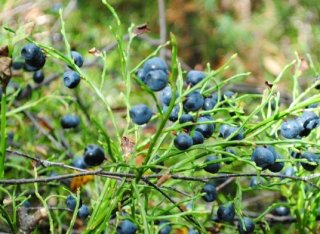LVM ensures protection of capercaillie mating areas
In 2011-2013, JSC Latvia’s State Forests (LVM) specialists carried out a project on protecting the capercaillie (wood grouse) population, preserving habitats and introducing a system to manage them, gaining extensive experience and knowledge about capercaillies, which will be put into practice this year.
The acquired knowledge about the needs of capercaillies’ habitats in state forests has been incorporated in special guidelines for forest management in eco-forests (for nature and recreation) and capercaillies’ mating areas. Capercaillies play an important role in these guidelines. LVM forestry specialists, forest management experts and those implementing these plans must organize their forest management activities in accordance with these guidelines to protect capercaillies and their habitats during the mating season. This is the first time in Latvia that protection of a certain species has been fully incorporated in forest management planning and production processes. This approach, experience and knowledge could also be used to protect other natural resources in Latvia.
In 2013, capercaillies’ mating areas were repeatedly inspected to establish their distribution in Latvia’s state forests. More than 300 mating areas have been established so far, but they remain undetermined in around 100 territories, where capercaillies have been spotted. In terms of capercaillie prevalence, the most significant regions of Latvia are northern Kurzeme, eastern Vidzeme and northern Latgale.
LVM specialist Elmārs Pēterhofs: "Finding capercaillie mating areas is a complicated and time-consuming process. Most males spend their lives in relatively small territories (300 to 1,000 hectares), choosing the most suitable areas for mating. These areas can be very small (3 to 5 hectares) and difficult to find. To find capercaillies’ mating areas, it is necessary to inspect, what we believe, the most suitable ones for mating in February and March. During the mating season, the second half of April, each of these areas must be inspected separately to spot capercaillies. This must be done early in the morning or late in the evening, when they appear. Weather conditions can also affect mating. For example, males do not mate in cold weather conditions. This means that, to find capercaillies’ mating areas, one must be experienced, have good knowledge of finding them, and also lucky. If lucky, a person can find two to three capercaillie mating areas per season.”
Determining capercaillie mating areas plays a decisive role in their protection, since these birds are very conservative and use their mating areas several dozen years. If disturbed, capercaillies usually abandon them, therefore it is necessary to manage and be aware of them, since they tend to change during the course of time, becoming unsuitable. LVM guidelines stipulate required, authorized and banned actions in capercaillie mating areas.
Information prepared by LVM Communications Department, phone +37167805432




